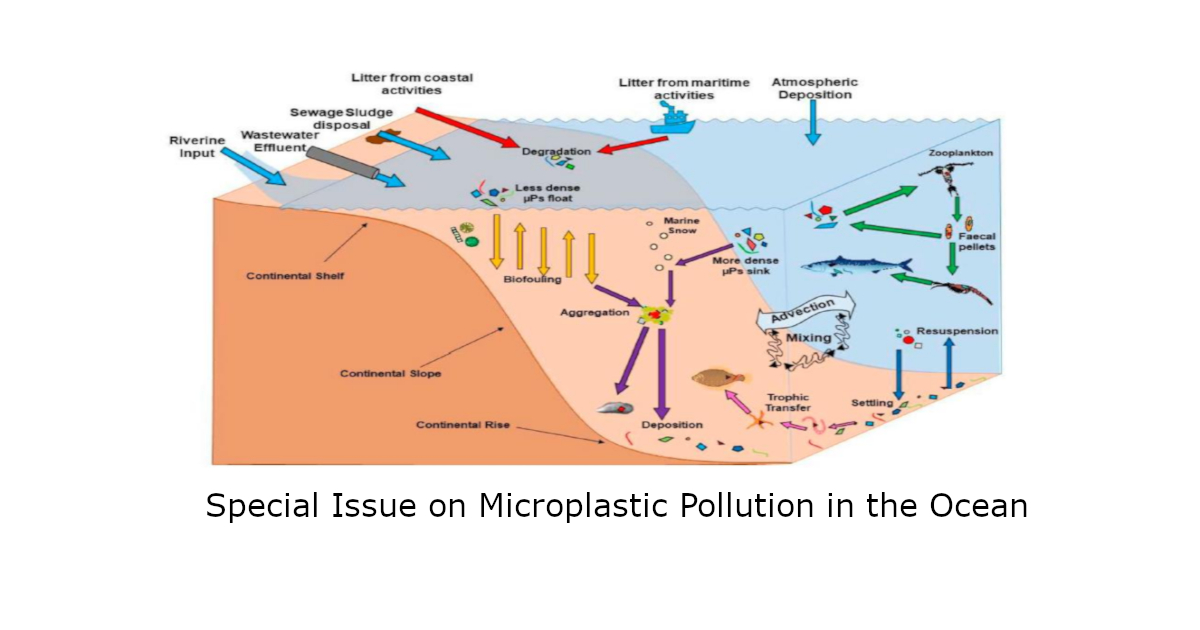Microplastic Pollution in the Ocean
A special issue of Journal of Marine Science and Engineering (ISSN 2077-1312). This special issue belongs to the section "Marine Pollution".
Deadline for manuscript submissions: closed (10 June 2023) | Viewed by 20487

Special Issue Editors
Interests: marine pollution; soil analysis; water and wastewater treatment; water quality; environmental analysis; water analysis; environmental pollution; environmental monitoring
Special Issues, Collections and Topics in MDPI journals
Interests: ecotoxicology; bioaccumulation; water contamination; biomagnification; wastewater and sewage sludge; mitigation/remediation; modelling; atmospheric pollution; pesticide residues
Special Issues, Collections and Topics in MDPI journals
Special Issue Information
Dear Colleagues,
Plastics began to enter the ocean in increasing quantities in the 1950s from a wide variety of land- and sea-based sources. Reports of floating plastic microdebris in the North Atlantic, North Pacific, Bering Sea and Japan Sea were first published in the scientific literature in 1970s–1980s. Unfortunately, however, the topic was largely ignored by the scientific community for many years. The purpose of the Special issue is to publish the most exciting research with respect to the above subject and to give a rapid tool for the free publication and dissemination of the articles for research, teaching, and reference purposes. In particular, the following topics are suggested: innovative methods for the characterization and quantification of microplastics in water bodies; impact on the biosphere; methods for their elimination or for reducing their harmfulness; search for natural biodegradable materials that can replace the use of plastics.
Prof. Dr. Michele Arienzo
Prof. Dr. Luciano Ferrara
Guest Editors
Manuscript Submission Information
Manuscripts should be submitted online at www.mdpi.com by registering and logging in to this website. Once you are registered, click here to go to the submission form. Manuscripts can be submitted until the deadline. All submissions that pass pre-check are peer-reviewed. Accepted papers will be published continuously in the journal (as soon as accepted) and will be listed together on the special issue website. Research articles, review articles as well as short communications are invited. For planned papers, a title and short abstract (about 100 words) can be sent to the Editorial Office for announcement on this website.
Submitted manuscripts should not have been published previously, nor be under consideration for publication elsewhere (except conference proceedings papers). All manuscripts are thoroughly refereed through a single-blind peer-review process. A guide for authors and other relevant information for submission of manuscripts is available on the Instructions for Authors page. Journal of Marine Science and Engineering is an international peer-reviewed open access monthly journal published by MDPI.
Please visit the Instructions for Authors page before submitting a manuscript. The Article Processing Charge (APC) for publication in this open access journal is 2600 CHF (Swiss Francs). Submitted papers should be well formatted and use good English. Authors may use MDPI's English editing service prior to publication or during author revisions.
Keywords
- Microplastic in oceans
- Key sources identification
- Fate and effects
- Analytical techniques
- Behavior and modeling
- Environmental impact and human health Case studies
- Accumulation preventing and minimization






